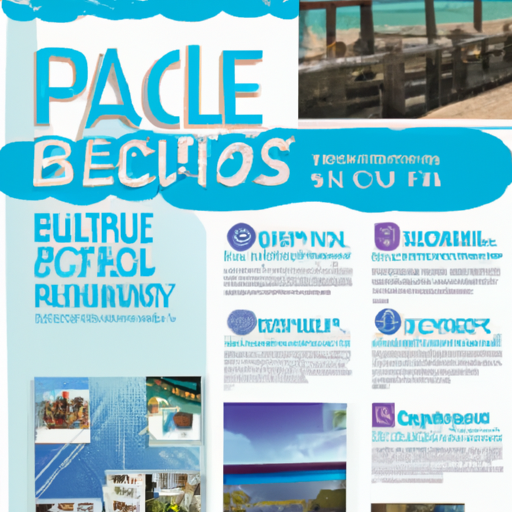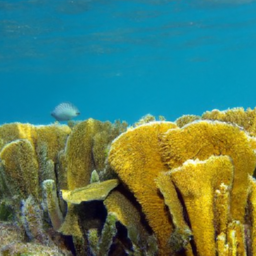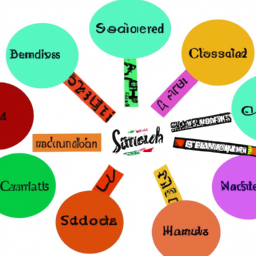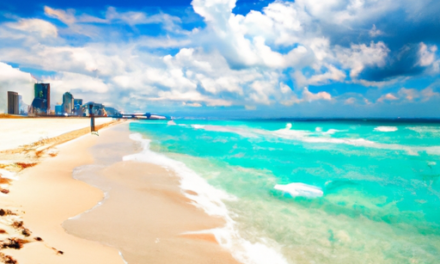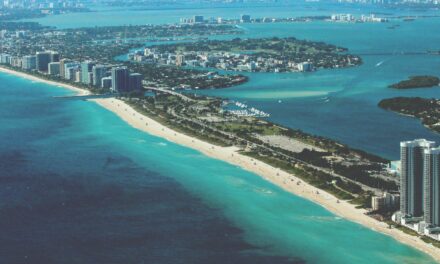In this article, you’ll learn all about Biscayne National Park, an amazing place filled with breathtaking landscapes and diverse marine life. You’ll discover the park’s rich history, its unique features, and the various activities you can enjoy while visiting. From snorkeling and diving to exploring the mangrove forests and coral reefs, there’s something for everyone in Biscayne National Park. So, let’s get started and uncover the wonders of this extraordinary destination.
Location and Overview
Geographical Location of Biscayne National Park
Biscayne National Park is located in southeastern Florida, just south of Miami. It encompasses a large portion of Biscayne Bay and the chain of islands known as the Florida Keys. The park is situated in Miami-Dade County and covers an area of approximately 172,971 acres, making it one of the largest marine national parks in the United States.
Size and Boundaries
The park’s boundaries extend from the southern tip of Key Biscayne to the northernmost islands of the Florida Keys. It includes all of Biscayne Bay and stretches nearly 25 miles along the Atlantic Ocean coastline. Biscayne National Park also encompasses Elliott Key, the largest of the park’s islands, as well as numerous smaller islands and coral reefs.
Ecological Importance of Biscayne National Park
Biscayne National Park is of great ecological importance due to its diverse marine ecosystems and extensive coral reefs. The park’s waters serve as a nursery and feeding ground for a wide variety of marine life, including fish, sea turtles, and manatees. The mangrove forests within the park provide essential habitat for nesting birds and serve as a buffer against storms and erosion. The park’s unique combination of submerged lands, coral reefs, and mangrove forests makes it a vital ecosystem that supports a high level of biodiversity.
History of Biscayne National Park
Creation of Biscayne National Monument
Biscayne National Park was initially established as Biscayne National Monument in 1968. The creation of the monument was in response to the threats posed by development and pollution to the delicate marine ecosystems in Biscayne Bay. The monument was intended to protect and preserve the area’s unique natural and cultural resources.
Upgrade to National Park Status
In 1980, Biscayne National Monument was upgraded to Biscayne National Park, thanks to the advocacy of environmentalists and local communities. The upgrade to national park status provided additional protection to the park’s resources and allowed for increased recreational opportunities for visitors.
Historical Significance of the Area
Biscayne National Park has a rich history that dates back thousands of years. The park’s islands and coastal areas were once home to indigenous tribes, such as the Tequesta and Seminole people. Later, during the 19th century, the area became a popular destination for fishermen, hunters, and adventurers. Today, the park preserves and showcases the historical and cultural heritage of these communities.
Biodiversity and Natural Features
Marine Ecosystems in Biscayne National Park
Biscayne National Park is renowned for its diverse marine ecosystems, which include seagrass beds, coral reefs, and mangrove forests. These ecosystems support a wide array of plant and animal species, many of which are unique to the region. The park’s marine environments provide critical habitats for numerous species of fish, crustaceans, and mollusks.
Coral Reefs and Mangrove Forests
The park’s coral reefs are among the most extensive and well-preserved in North America. The reefs are home to a vast array of corals, sponges, and other invertebrates, as well as a diverse range of colorful tropical fish. The mangrove forests within the park are equally important, providing shelter for birds, reptiles, and fish, and serving as nurseries for many marine species.
Flora and Fauna Diversity
Biscayne National Park boasts an impressive diversity of flora and fauna. The park is home to more than 500 species of fish, including the vibrant queen angelfish and the elusive goliath grouper. It is also a haven for birdwatchers, with over 200 species of birds, including the colorful roseate spoonbill and the iconic American flamingo. Other notable species found within the park include manatees, sea turtles, and dolphins.
Recreational Activities
Boating and Fishing Opportunities
Biscayne National Park offers numerous opportunities for boating and fishing enthusiasts. The park’s crystal-clear waters make it an ideal destination for boating, whether you prefer sailing, powerboating, or kayaking. Fishing is also a popular activity, with both saltwater and freshwater fishing opportunities available. Anglers can try their luck at catching a variety of fish, including snook, tarpon, and bonefish.
Snorkeling and Scuba Diving
With its extensive coral reefs and diverse marine life, Biscayne National Park is a paradise for snorkelers and scuba divers. The park offers several designated snorkeling and diving sites, where visitors can explore the vibrant underwater world. Snorkelers can swim among colorful tropical fish and observe the intricate coral formations, while scuba divers can venture deeper to discover hidden caves and shipwrecks.
Kayaking and Canoeing
For a more peaceful and intimate experience of the park, kayaking and canoeing are popular options. Visitors can paddle through the calm waters of Biscayne Bay, exploring the maze-like channels lined with mangrove trees. Kayakers and canoeists may spot dolphins, manatees, and a variety of bird species as they navigate through the park’s picturesque waterways.
Visitor Centers and Facilities
Dante Fascell Visitor Center
The Dante Fascell Visitor Center is the main visitor center of Biscayne National Park. Located on the mainland, the center offers a range of exhibits and educational programs that provide an introduction to the park’s natural and cultural resources. Visitors can learn about the park’s history, ecology, and recreational opportunities, as well as obtain information on guided tours and ranger-led activities.
Other Visitor Centers in Biscayne National Park
In addition to the Dante Fascell Visitor Center, Biscayne National Park also has several smaller visitor centers located within the park. These centers provide information on specific areas within the park and offer interpretive exhibits and ranger programs. They serve as convenient starting points for exploring the park’s various islands and recreational areas.
Campgrounds and Picnic Areas
For those who wish to immerse themselves in the park’s beauty for more than just a day, Biscayne National Park offers camping facilities. Elliott Key and Boca Chita Key have campgrounds with amenities such as restrooms and picnic areas. Camping in these picturesque settings allows visitors to fully appreciate the park’s tranquility and natural wonders.
Threats to Biscayne National Park
Water Pollution and Habitat Destruction
One of the primary threats to Biscayne National Park is water pollution. Runoff from urban areas and agriculture can introduce pollutants, such as pesticides and fertilizers, into the park’s waters. These pollutants can degrade water quality, harm marine life, and damage coral reefs. Habitat destruction, including the clearing of mangrove forests and the dredging of channels, also poses a significant threat to the park’s ecosystems.
Climate Change Impacts
Like many other coastal areas, Biscayne National Park is vulnerable to the impacts of climate change. Rising sea levels, increasing ocean temperatures, and more frequent and intense storms can all have detrimental effects on the park’s coral reefs and mangrove forests. Climate change also threatens the park’s biodiversity, as many species may struggle to adapt to rapidly changing conditions.
Invasive Species
The introduction of invasive species is another major threat to the ecological balance of Biscayne National Park. Invasive plants, such as the Brazilian pepper tree, can outcompete native vegetation and disrupt the natural habitats within the park. Invasive animals, such as the lionfish, can prey on native species and upset the delicate balance of the marine ecosystems.
Conservation Efforts
Marine Protected Areas
Biscayne National Park has implemented various measures to protect its fragile marine ecosystems. The park includes several marine protected areas, where certain activities, such as fishing or boating, are restricted to minimize impacts on the environment. These protected areas help preserve the park’s biodiversity and allow for the recovery of damaged coral reefs and other habitats.
Partnerships and Research Initiatives
The National Park Service works closely with various organizations, academic institutions, and local communities to advance conservation efforts in Biscayne National Park. Through partnerships and research initiatives, scientists are studying the park’s ecosystems, monitoring water quality, and exploring strategies to mitigate the impacts of climate change. These collaborative efforts help inform the park’s management decisions and ensure the long-term preservation of its natural resources.
Education and Awareness Programs
Biscayne National Park offers a range of educational programs and outreach initiatives to increase public awareness and understanding of the park’s ecological importance. Through guided tours, interpretive exhibits, and educational materials, visitors are encouraged to learn about the park’s ecosystems, cultural heritage, and conservation challenges. These programs aim to foster a sense of stewardship and inspire individuals to take action in protecting Biscayne National Park.
Local Communities and Indigenous People
Closest Communities to Biscayne National Park
The closest communities to Biscayne National Park are Miami, Homestead, and Islamorada. These communities serve as gateways to the park, providing amenities and services for visitors. Miami, in particular, offers a wide range of accommodations, dining options, and recreational activities for those exploring Biscayne National Park.
Indigenous Connections and Cultural Heritage
Biscayne National Park holds cultural significance for the indigenous tribes, such as the Tequesta and Seminole people, who once inhabited the area. The park works collaboratively with these communities to preserve and promote their cultural heritage. Through interpretive programs and cultural events, visitors can learn about the history, traditions, and ongoing contributions of indigenous people to the park’s natural and cultural landscapes.
Traditional Uses of the Area
Prior to the establishment of Biscayne National Park, the area was used by indigenous tribes for hunting, fishing, and gathering resources. These traditional uses continue to be respected and recognized within the park. Visitors can explore the remnants of ancient Tequesta settlements and learn about the sustainable practices employed by indigenous communities in their interactions with the park’s natural resources.

Management and Park Regulations
National Park Service Management
Biscayne National Park is managed by the National Park Service, an agency of the U.S. Department of the Interior. The National Park Service is responsible for preserving and protecting the park’s natural, cultural, and recreational resources. Park rangers and staff are tasked with enforcing park regulations, conducting research, and providing educational programs to visitors.
Boating and Fishing Regulations
To ensure the preservation of the park’s marine ecosystems, Biscayne National Park has specific regulations governing boating and fishing activities. These regulations include restrictions on fishing methods, catch limits, and designated areas for boating and fishing. Visitors are encouraged to familiarize themselves with these regulations to help preserve the park’s delicate balance of aquatic life.
Preservation and Restoration Programs
Biscayne National Park has implemented preservation and restoration programs to address the threats to its ecosystems. These programs involve the removal of invasive species, the restoration of damaged habitats, and the monitoring and protection of endangered species. Additionally, the park works to reduce pollution and promote sustainable practices to minimize the impacts of human activities on the park’s natural environment.
Conclusion
Importance of Protecting Biscayne National Park
Biscayne National Park is a unique and irreplaceable natural treasure. Its diverse marine ecosystems, coral reefs, and mangrove forests provide critical habitats for countless species of plants and animals. Protecting the park ensures the preservation of its rich biodiversity and ecological balance for future generations to enjoy.
Recreational and Ecological Value
Biscayne National Park offers a wide range of recreational opportunities for visitors to experience and appreciate its natural beauty. Whether it’s boating, fishing, snorkeling, or kayaking, the park provides countless ways to connect with nature and enjoy outdoor activities. The park’s ecological value goes hand in hand with its recreational value, as the preservation of its ecosystems is essential for the continued enjoyment and appreciation of its natural wonders.
Looking Ahead: Future Challenges and Opportunities
As we look to the future, there are both challenges and opportunities facing Biscayne National Park. Climate change, water pollution, and invasive species remain significant threats to the park’s ecosystems, requiring ongoing conservation efforts. However, partnerships, research initiatives, and education programs offer hope and the potential to mitigate these challenges. By raising awareness and promoting sustainable practices, we can ensure the long-term protection and enjoyment of Biscayne National Park for generations to come.
